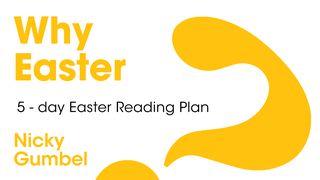Over the Fence: Lessons From EphesusSýnishorn

Day 1 – Speed Run
Ephesians 1–6
There are three words that get repeated all the time in real estate—and they’re all the same: location, location, location. In my undergraduate studies, I had a professor who said something similar about studying the Bible. He would shout to the class: context, context, context!
Context is everything when it comes to properly understanding and interpreting Scripture for the modern day. Over the next week, we’re going to study a letter written to the church in Ephesus. But today, we’re going to speed run it.
Anyone can pull a Bible verse out of context to make it say whatever they want. It’s only when we see verses in the scope of the entire writing that we can derive their true meaning and drink deeply of their wisdom. Every day after this one, we’ll focus on a smaller portion of the letter. But today—because you wouldn’t read the second paragraph of a letter from a friend and assume you understand the whole message—we’re going to read the entire letter of Ephesians in one sitting. This will give us an overview of the letter’s context and help us understand how each part fits into the larger body before we dive into the details throughout the week.
While reading the letter will give us helpful context, let me offer a few more pieces of background before you begin:
- This letter was written by a man named Paul to the church in Ephesus. Paul had visited and taught in this city for several years before writing this letter (see Acts 19).
- Ephesus was a massive Roman city on the coast of the Mediterranean Sea in what is now modern-day Turkey. It was one of the largest and most prosperous cities in the world at the time. It boasted a theater that could seat over 25,000 people (as seen in Acts 19), one of the largest libraries in the Roman Empire with up to 12,000 scrolls, and was home to one of the wonders of the ancient world—the temple of the goddess Artemis.
- The church in Ephesus was made up of both Jewish believers, who still adhered to many Jewish customs, and Gentile believers, who came from pagan worship of Greek and Roman gods. This diversity created tension and disagreements in the church around morality and religious standards.
- Paul wrote this letter while under house arrest in Rome, awaiting trial. While most modern translations address the letter specifically to the saints in Ephesus, it was likely originally a more general letter that circulated among several churches in the region—including the church in Ephesus.
- Tradition holds that Ephesus later became an important center of the early Christian movement. Many believe that both the Apostle John and Mary, the mother of Jesus, spent their final days there and were buried in the city.
There’s one more thing you should know before diving into the letter: ancient letters weren’t written like modern ones. Most of Paul’s letters begin with a greeting, poem, prayer, or blessing before getting into the core message. As you read through Ephesians today, here are a few things to look for:
- Paul opens his letter with a poem of blessing that emphasizes all that Jesus has done for us.
- He goes on to point out that Jew and Gentile alike are part of God's Kingdom. They are equal, not enemies.
- Paul emphasizes the importance of unity in the church. Unity produces spiritual maturity.
- He then gives examples of how that spiritual maturity should shape everyday relationships—between husbands and wives, children and parents, and slaves and masters.
- Paul closes the letter with a warning, using the image of a Roman soldier to show the importance of preparing for spiritual battle, rather than fighting one another.
Now it’s time to speed run through the letter of Ephesians. This first read-through isn’t meant for deep study or pausing at every verse. Your goal today is to move through the content at a steady pace and get a big-picture view of the letter. Tomorrow, we’ll begin digging deeper into chapter one.
About this Plan

There is so much we can learn from our brothers and sisters in the early Church! As part of our year-long emphasis on the word HOME, we’ve explored many different aspects of what it means to truly follow Jesus. Now, as we step out of our home and into the backyard, we can peek over the fence to see what our neighbors in the ancient city of Ephesus were up to—and learn from their example.
More








